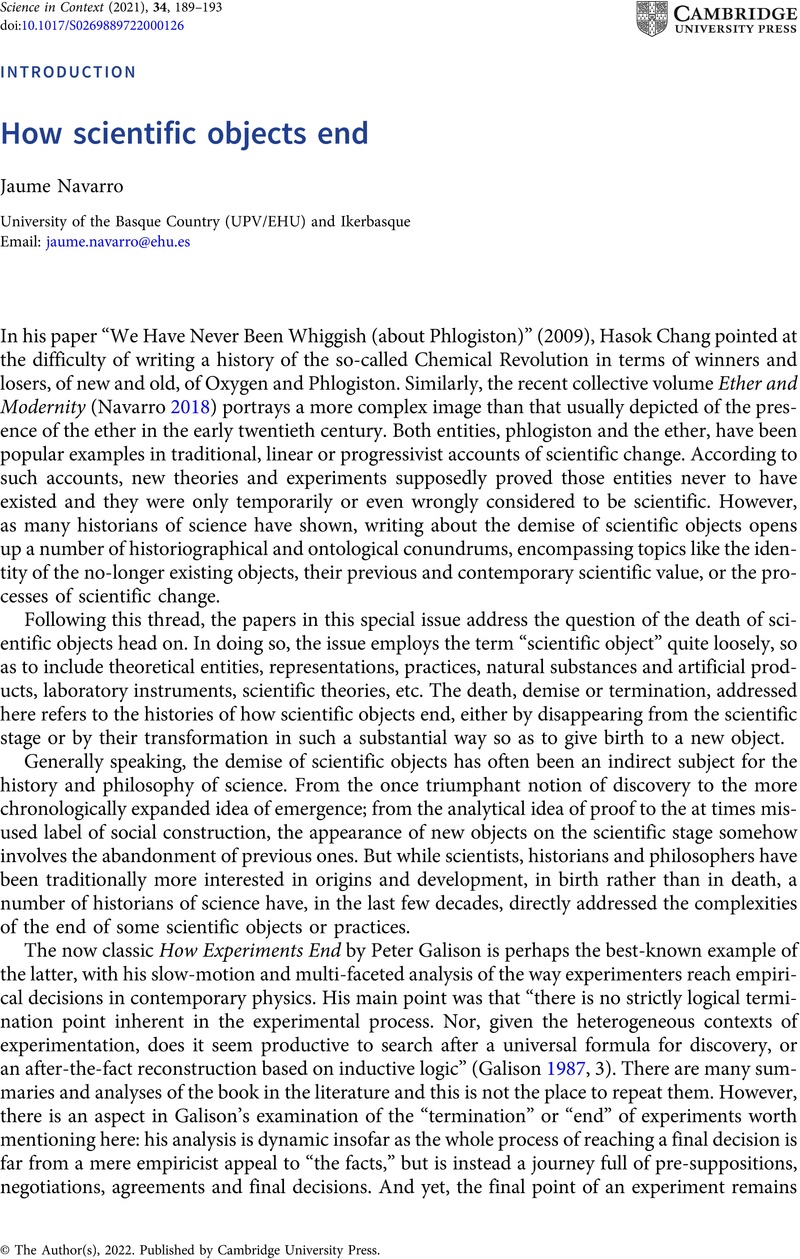No CrossRef data available.
Article contents
How scientific objects end
Published online by Cambridge University Press: 29 November 2022
Abstract
An abstract is not available for this content so a preview has been provided. Please use the Get access link above for information on how to access this content.

- Type
- Introduction
- Information
- Science in Context , Volume 34 , Issue 2: The Death of Scientific Objects , June 2021 , pp. 189 - 193
- Copyright
- © The Author(s), 2022. Published by Cambridge University Press
References
Arabatzis, Theodore. 2006. Representing Electrons. A Biographical Approach to Theoretical Entities. Chicago: Chicago University Press.Google Scholar
Chang, Hasok. 2009. “We Have Never Been Whiggish (About Phlogiston).” Centaurus 51: 239–264.CrossRefGoogle Scholar
Daston, Lorraine ed. 2000. Biographies of Scientific Objects. Chicago: Chicago University Press.Google Scholar
Jardine, Boris, Kowal, Emma & Bangham, Jenny. 2019. “How collections end: Objects, meaning and loss in laboratories and museums.” BJHS Themes 4: 1–27.CrossRefGoogle Scholar
Navarro, Jaume ed. 2018. Ether and Modernity. The Recalcitrance of an Epistemic Object in the early twentieth century. Oxford: Oxford University Press.Google Scholar
Rheinberger, Hans-Jörg. 2000. “Cytoplasmic particles. The trajectory of a scientific object.” In Daston (2000): 270-294.Google Scholar
Soderqvist, Thomas (2020) “The Meaning, Nature, and Scope of Scientific (Auto)Biography.” In Biographies in the History of Physics: Actors, Objects, and Organisations edited by Forstner, Christian, Hoffmann, Dieter
, and Walker, Mark, 301–318. Heidelberg: Springer.CrossRefGoogle Scholar



